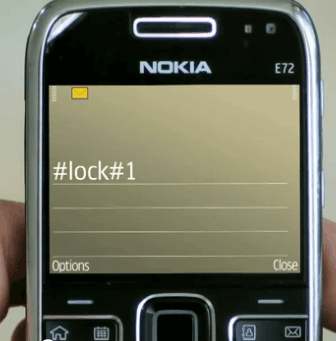F-Secure Anti-Theft For Mobile
Thursday, 23 June 2011 03:05
Posted by _Blogger_
A lost or stolen cell phone can be devastating, considering that the phone may contain private data and information that may even be used for identity theft or other criminal activities.
F-Secure Anti-Theft For Mobile is a free security software for cell phones running Symbian OS, Windows Mobile or Android. It offers several options to take control of the situation.
The key features of Anti-Theft for Mobile are the ability to remotely lock the cell phone, locate it and to wipe its data in case it looks like the phone is lost forever.

The software reacts on remote commands send via SMS to the phone. Here are the available commands and their action:
- Send #lock#YourCode to the stolen or lost phone. Will lock the phone, only option to unlock it is to enter the correct password.
- Send #locate#YourCode to the phone. Locates the phone and displays a link to Google Maps that can be used to find out where the phone is located.
- Send #wipe#YourCode to the phone to delete all confidential data on the phone.
Windows 8: Microsoft's Radical Move
Wednesday, 15 June 2011 05:28
Posted by _Blogger_
Microsoft decided to whip back the curtain on Windows 8, with demonstrations at the 2011 Computex conference in Taiwan and D:All Things Digital Conference in Rancho Palos Verdes, Calif.
If things stay on course through the final release, Microsoft's next-generation operating system will represent something of a sea change from previous versions of Windows. At least in the tablet version demonstrated at both conferences, Windows 8's user interface relies on large, colorful tiles that display active information and open applications at a finger-touch. ("Windows 8," by the way, is apparently Microsoft's internal codename for the OS, and not necessarily the moniker for the final version.)
Windows 8 features multitasking, including the ability to display two apps side-by-side on the screen. Users can "snap" applications to one side of the screen, a feature heavily reminiscent of the "Aero Snap" present in Windows Vista and Windows 7. A swipe of the finger will cycle through apps. There's a virtual keyboard, adjustable Interface aside, Windows 8 will apparently support the full version of legacy applications such as Office.
"This represents a fundamental shift in Windows design that we haven't attempted since the days of Windows 95, presenting huge opportunities for our hardware partners to innovate with new PC designs," Mike Angiulo, corporate vice president of Windows Planning, Hardware and PC Ecosystem, reportedly told the audience at the Computex conference.
Windows 8 on a tablet certainly looks pretty. The question is whether that streamlined, sleek interface can support the heavy-duty needs of hardcore PC users, who are used to the old Windows interface that allows for multiple open windows and documents and applications. Microsoft has shown how Windows 8 can play, particularly on a tablet; the question now is how Windows 8 can improve people's daily workflow--not to mention, how seamlessly it can reconcile this new interface and apps with the legacy baggage that so many users and developers bring to the proverbial table.
[source: Microsoft Watch ]
If things stay on course through the final release, Microsoft's next-generation operating system will represent something of a sea change from previous versions of Windows. At least in the tablet version demonstrated at both conferences, Windows 8's user interface relies on large, colorful tiles that display active information and open applications at a finger-touch. ("Windows 8," by the way, is apparently Microsoft's internal codename for the OS, and not necessarily the moniker for the final version.)
Windows 8 features multitasking, including the ability to display two apps side-by-side on the screen. Users can "snap" applications to one side of the screen, a feature heavily reminiscent of the "Aero Snap" present in Windows Vista and Windows 7. A swipe of the finger will cycle through apps. There's a virtual keyboard, adjustable Interface aside, Windows 8 will apparently support the full version of legacy applications such as Office.
"This represents a fundamental shift in Windows design that we haven't attempted since the days of Windows 95, presenting huge opportunities for our hardware partners to innovate with new PC designs," Mike Angiulo, corporate vice president of Windows Planning, Hardware and PC Ecosystem, reportedly told the audience at the Computex conference.
Windows 8 on a tablet certainly looks pretty. The question is whether that streamlined, sleek interface can support the heavy-duty needs of hardcore PC users, who are used to the old Windows interface that allows for multiple open windows and documents and applications. Microsoft has shown how Windows 8 can play, particularly on a tablet; the question now is how Windows 8 can improve people's daily workflow--not to mention, how seamlessly it can reconcile this new interface and apps with the legacy baggage that so many users and developers bring to the proverbial table.
[source: Microsoft Watch ]
Subscribe to:
Posts (Atom)